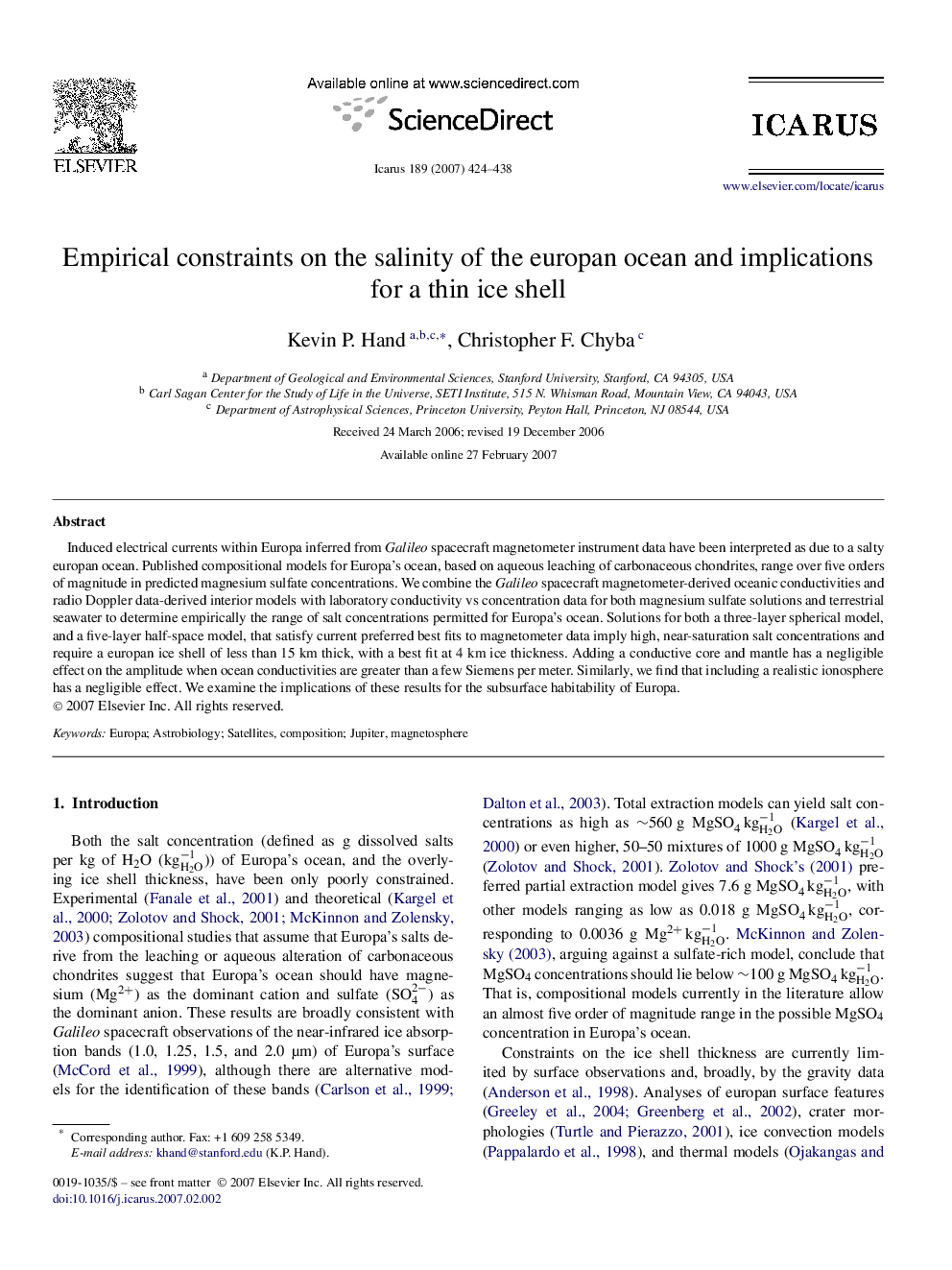| Article ID | Journal | Published Year | Pages | File Type |
|---|---|---|---|---|
| 1775658 | Icarus | 2007 | 15 Pages |
Induced electrical currents within Europa inferred from Galileo spacecraft magnetometer instrument data have been interpreted as due to a salty europan ocean. Published compositional models for Europa's ocean, based on aqueous leaching of carbonaceous chondrites, range over five orders of magnitude in predicted magnesium sulfate concentrations. We combine the Galileo spacecraft magnetometer-derived oceanic conductivities and radio Doppler data-derived interior models with laboratory conductivity vs concentration data for both magnesium sulfate solutions and terrestrial seawater to determine empirically the range of salt concentrations permitted for Europa's ocean. Solutions for both a three-layer spherical model, and a five-layer half-space model, that satisfy current preferred best fits to magnetometer data imply high, near-saturation salt concentrations and require a europan ice shell of less than 15 km thick, with a best fit at 4 km ice thickness. Adding a conductive core and mantle has a negligible effect on the amplitude when ocean conductivities are greater than a few Siemens per meter. Similarly, we find that including a realistic ionosphere has a negligible effect. We examine the implications of these results for the subsurface habitability of Europa.
